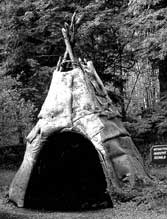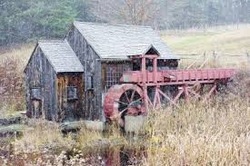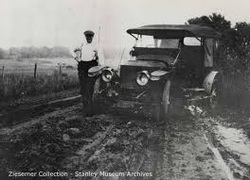History of the GMT
|
Pre Colonialism
1780-1800s 1900s-1960s 2006-Present |
Abenaki Era
Speculation has it that the first trails on the mountain were blazed by the Abenaki people from their home along the Tweed River. They would ascend to the summit where they had built a ceremonial wigwam at a location chosen for its prodigious views of the valley and mountain range over all four compass points. From here they could look upon their village where they cultivated “the three sisters:” beans, squash, and corn. They stomped in many trails when they canvassed the forest collecting wild burdock, leeks, berries, mushrooms, fiddleheads, and maple sap for syrup and sugar. They tracked game along the paths that would naturally form as a result of the deer’s favored routes. A trail system of sorts was born.
Pioneer Days
Two men humped a 200 pound crankshaft over Sherburne Pass for Captain Goodrich's lumber mill and thus ushered in the industrial era in Pittsfield. The mountain face was all but stripped of trees and sheep farms arose in their stead.
The trail network was now a series of paths worn in by the livestock leading the way to the sweetest grass and the best watering holes. The summit was now site of a hunting cabin, but this was soon abandoned as deer and other game became scarce as their habitat was decimated. Rise of Tourism
With the lack of trees, the land eroded and grew desolate. Farmers abandoned their farms in search of more productive land. The forests regrew from seeds that had been laying fallow, biding their time for such an opportunity.
With the rise of the automobile, tourism blossomed. Riverside, a beguiling horse farm along the banks of the Tweed hired out horses for trail rides. Urbanites would while away nights at the top cabin as a welcome reprieve from the bustle of city living. In the winter, cross country ski tours would embark from a barn on the banks of the Tweed and loop around trails like Riverside Run and Escalator. Mountain Biking Era
Jason Hayden first made the forest adjacent to Pittsfield mountain biking worthy. He designed GMT classics like Warman and Fusters, tooled with a long passion for mountain biking and building. At the height of his fervor, his family weighed whether or not to send search and rescue into the woods to find him. Suffice it to say, he lived the trails.
The Present Day
Matt Baatz came to Vermont on a whim after stints in the high country of Arizona and the mountains of Oaxaca, Mexico. Issued a garden rake and a shovel, he set to work in October of 2009 and has rarely left the forest since.
|

